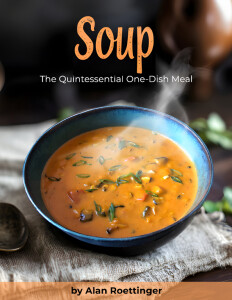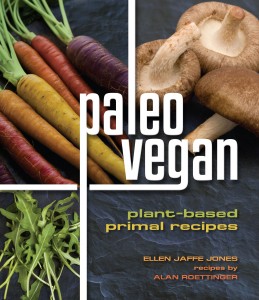Used as a medicine in China for roughly 6000 years, ginger is a delicious and versatile spice, lending itself to enhancing a wide range of cuisines. It’s been shown to lower cholesterol, and to relieve arthritis, nausea and morning sickness. It also has powerful anti-inflammatory, anti-cancer, and anti-fungal properties. More than that, to a cook, ginger has the ability to perk up any number of sauces, dressings, marinades, soups, salads, stews, and of course, curries.
At the first sign of a cold, drinking a fresh ginger tea infusion will often stave off a full-blown illness. A ginger infusion with lemon and honey is known to relieve and even cure a sore throat. For vegans who eschew the use of honey, the same tea can be made without it. A skin-rejuvenating rub can be made by warming a combination of finely chopped or grated ginger, fresh lime juice, and epsom salt. But by far the most pleasurable way to obtain the wonderful health benefits of ginger is to enjoy it in food.
These pictures illustrate a few ways to prepare fresh ginger for various culinary uses. Click on the images to enlarge them, if you wish:
 |
| When a recipe calls for grated ginger or ginger juice, there are a few ways to go about this. Pictured here are a Japanese ceramic ginger grater, a small steel grater, and a microplaner, along with a peeled piece of ginger (called a rhizome). Because ginger is very fibrous, rubbing it across a traditional grater will carve away bits of the tender flesh and release some juice, leaving the long fibers behind. For “grated ginger,” you would simply gather up the pulp with the juice and add it to your recipe. For juice, you would squeeze the pulp over a small dish and collect the juice that way. I used this technique for many years, until the microplaner was invented. |
 |
| A microplaner has hundreds of razor-sharp blades that slice super-thin shavings off the ginger, fibers and all, making this the ultimate “grating” tool. |
 |
| It’s been called a “rasp,” but this is a terrible misnomer, because whereas a rasp abrades the surface of something, this tool actually cuts with surgical precision, releasing much less juice than the traditional grater does. |
 |
| As you can see, although some juice does bleed out, the ginger remains remarkably dry compared with the mushy pulp that would result from grating. This is important is many applications that involve subsequent cooking, where it’s preferable to have the juices release slowly into a sauce or stew base, rather than boil away quickly. |
|
 |
| For other applications, slices of various thicknesses may be called for. This is best accomplished with a very sharp knife–again, to avoid crushing the juices out as you work. |
 |
| To make julienne strips, stack a few slices and cut into even sticks. Obviously, you can make them any thickness you wish, by first cutting the slices the desired thickness, and then cutting the sticks the same way. You can also vary the thickness, to achieve long, flat strips, like tiny linguine, for a slightly different effect. If you cut the original slices on a sharp diagonal, your julienne strips will have pointed tips. |
 |
| If your recipe calls for finely chopped ginger, the best way to do this is to stack very thin julienne strips and cut thinly across them, into tiny dice. These will not only have an aesthetically appealing appearance, but as with the other shapes, they will retain most of their juice. |
Of course, you can also use a blender to incorporate fresh ginger into a sauce, chutney or other preparation. In order to avoid a stringy result, however, it’s best to first cut very thin slices, across the grain as illustrated above.
There is also a fast, easy recipe for a gingery salad dressing in my first book,
Omega 3 Cuisine:
Quick Ginger Vinaigrette
Makes about 1⁄3 cup
1 piece (2 inches) peeled fresh ginger, grated
1⁄4 cup
Udo’s Oil1 tablespoon balsamic vinegar
1⁄4 teaspoon sea salt
1⁄4 teaspoon coarsely ground black pepper
Squeeze the juice from the grated ginger into a small bowl
and discard the pulp. Add the remaining ingredients and
whisk furiously until emulsified.
Note: This book was written before the advent of the fabulous microplaner, so if you have access to one, you can add the entire pulp, and there won’t be any strings in it! This recipe makes a small amount, so if you’d rather make more at one time, you might prefer to use a blender (remember to slice the ginger first!). You can substitute with a different oil, if you prefer, such as almond or walnut. If you’d prefer a lighter color, try “golden,” or “white” balsamic, or brown rice vinegar. You might also vary this with other Asian flavors, by throwing in some sliced lemongrass, or sriracha sauce. Walk on the wild side…














I’ve been battling a cough recently, and I decided to turn to natural methods rather than pills to help fight it. Raw ginger with honey is one of the tips I found during my research, and while I’m not crazy about the zesty flavor, I have seen a big improvement in the tickle in my throat. I’m impressed by its healing properties! Thanks for the rundown on ways to prep it – you’ve convinced me that I need a microplane!
Glad to be of service!
One thing I’ve heard, and sometimes remind myself when using natural remedies, is that if something like ginger, or cayenne, or goldenseal seem strong or harsh to us, just think how strong or harsh they are to unfriendly microorganisms!